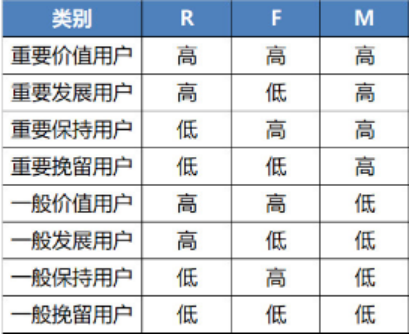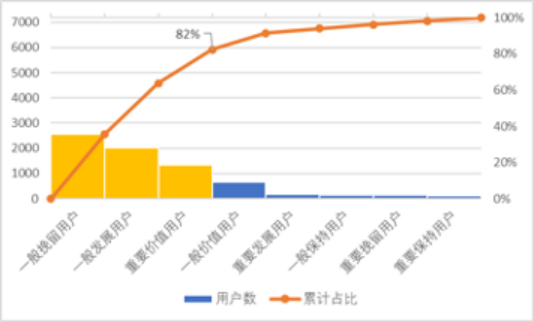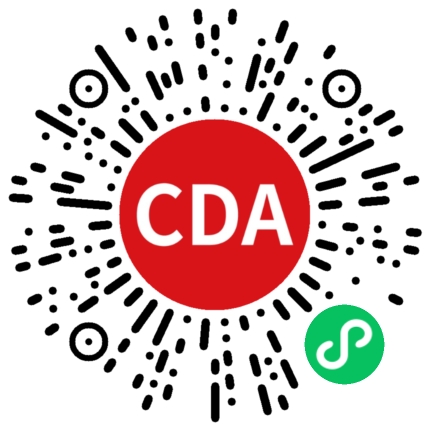The following shows customer tiering based on the RFM model for a certain company, along with Pareto charts for the different customer types. Please answer the questions based on the charts:


重要价值用户——Important Value Users
重要发展用户——Important development Users
重要保持用户——Important retained users
重要挽留用户——Important reactivated users
一般价值用户——Typical low-value users
一般发展用户——Typical development users
一般保持用户——Typical retained users
一般挽留用户——Typical reactivated users
高——high
低——low
With limited funds, to increase revenue, marketing should focus on which customer group?
A. Typical retention users
B. Typical development users
C. Important high-value users
D. Typical low-value users
From the Pareto chart and user category traits, typical development users have high contribution and active store visits. Stimulating their contribution increase has high expected revenue gains, so B is correct.
正确答案是:C: 重要价值用户(Important Value Users)。
专业分析如下:
1. **RFM 模型**:RFM 模型通过评估客户的最近购买行为(Recency)、购买频率(Frequency)和购买金额(Monetary),将客户分为不同的层级。重要价值用户在这三个指标上都表现突出,是公司最有价值的客户。
2. **投入产出比**:由于重要价值用户已经表现出高购买频率和高购买金额,针对他们的营销活动更可能带来高回报。相对而言,其他类别的客户需要更多的时间和资源来提升他们的价值。
3. **客户忠诚度**:重要价值用户通常具有较高的品牌忠诚度,通过适当的营销策略(如个性化推荐、忠诚度计划等),可以进一步增强他们的忠诚度和购买频率,进而增加公司收入。
4. **资源有限**:在资源有限的情况下,应该优先将资源分配给那些已经证明有高价值的客户群体,以确保投资的最大回报。
综上所述,重要价值用户(C: 重要价值用户)是最值得在有限资金下进行营销投入的客户群体。
